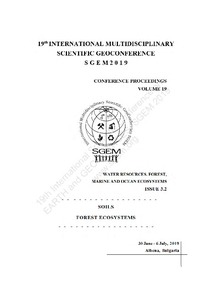METHANOTROPHIC ABILITY OF MOSSES AND LICHENS ASSOCIATED BACTERIA IN PERMAFROST ECOSYSTEMS OF EASTERN SIBERIA
Скачать файл:
URI (для ссылок/цитирований):
https://www.sgem.org/index.php/elibrary?view=publication&task=show&id=5732https://elib.sfu-kras.ru/handle/2311/142625
Автор:
Евграфова, Светлана Юрьевна
Кадуцкий, Валерий Карапетович
Мухортова, Людмила Владимировна
Прудникова, Светлана Владиславна
Коллективный автор:
Институт фундаментальной биологии и биотехнологии
Базовая кафедра биотехнологии
Дата:
2019-07Журнал:
International Multidisciplinary Scientific GeoConference Surveying Geology and Mining Ecology Management, SGEMКвартиль журнала в Scopus:
без квартиляБиблиографическое описание:
Евграфова, Светлана Юрьевна. METHANOTROPHIC ABILITY OF MOSSES AND LICHENS ASSOCIATED BACTERIA IN PERMAFROST ECOSYSTEMS OF EASTERN SIBERIA [Текст] / Светлана Юрьевна Евграфова, Валерий Карапетович Кадуцкий, Людмила Владимировна Мухортова, Светлана Владиславна Прудникова // International Multidisciplinary Scientific GeoConference Surveying Geology and Mining Ecology Management, SGEM: Soils, Forest ecosystems. — 2019. — Т. 19 (№ 3.2). — С. 293-300Аннотация:
Methanotrophic bacteria are unique group of microorganisms structurally and functionally adapted to use methane as a source of carbon, which is of great interest due to their ability to oxidize atmospheric methane. Methanotrophs are known to associate with mosses, which provide bacteria by habitat and protection. Methanotrophic bacteria provide mosses with carbon dioxide resulting of methane oxidation, whose content in moss tissues can reach 32%. We studied mosses and lichens sampled in Eastern Siberia permafrost ecosystems for methane oxidizing ability of associated bacteria, at concentrations of methane close to atmospheric. The consumption of methane in consortia of mosses and lichens and associated microorganisms was measured in laboratory incubation experiments. The methanotrophic activity registrated using gas analyzer Picarro 2201-i (Picarro Inc., USA) as a shift in the isotopic composition δ13С in methane. It was shown that samples collected in permafrost soils have a larger ability to methanotrophy than sample collected in non-permafrost soils. In addition, we separated all samples into individual species of mosses and lichens and measured methanotrophic ability of the species. It has been shown that methanotrophs associated with lichens Сladonia stelaris and Сetraria laevigata have great methanotrophic ability on a level of methanotrophs associated with mosses Rhytidium rugosum and Dicranum polysetum.

